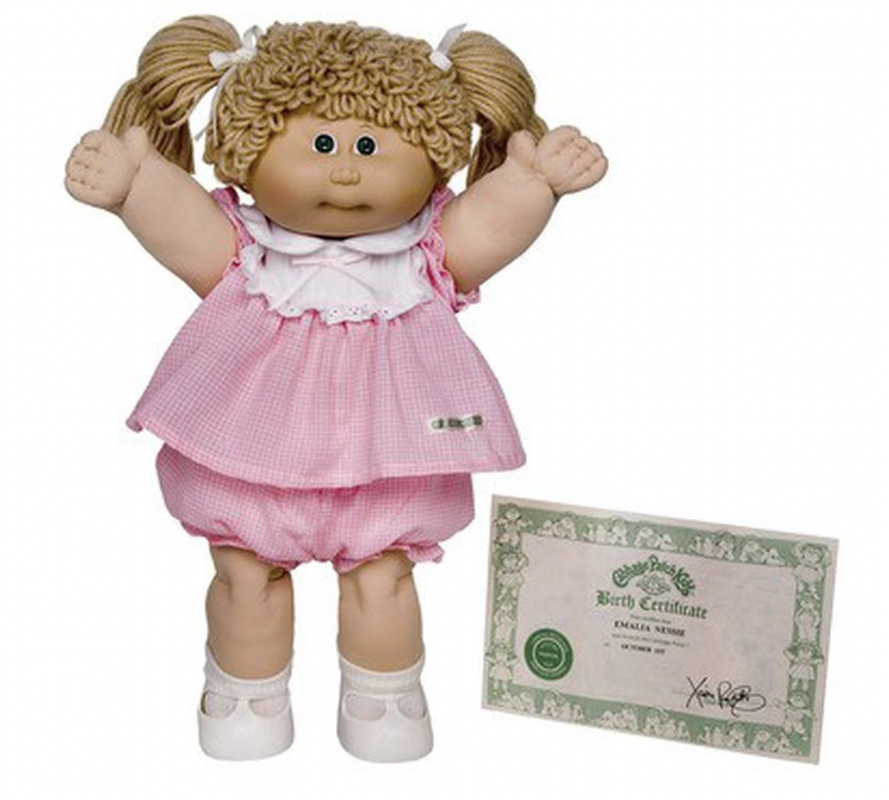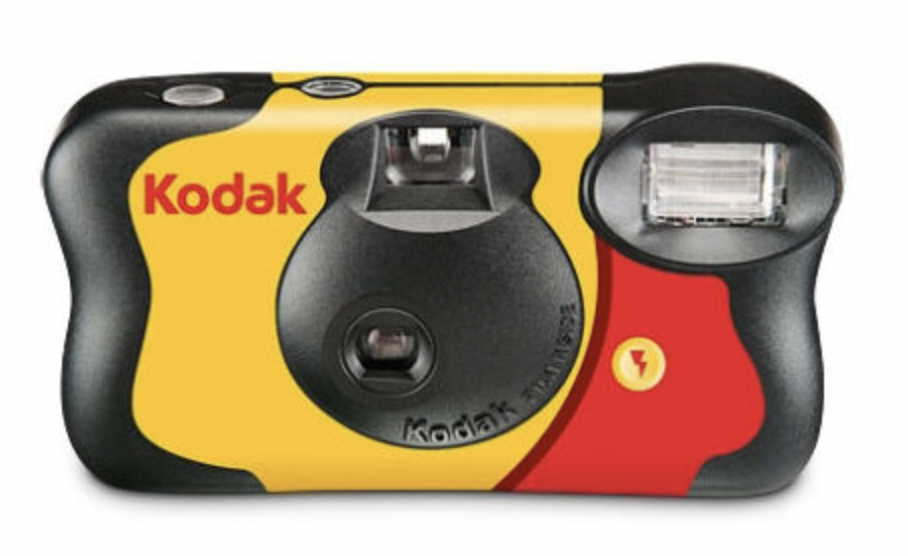|
Common business problem number 8: market changes I spent most of my career in the consumer products industry, namely in clothing, toys and seed products. One of the benefits of selling consumer products is that it can be a relatively low barrier to entry. That means it doesn’t require much capital to get started. You can print a hundred t-shirts and start selling them under your new, super cool apparel label without a huge investment. However, there is a big con that people often don’t pay attention to which is the necessity to take into consideration trends, styles and consumer desires. And that has led to failure after failure of some of the most iconic brands. Trends: Cabbage Patch Kids The Cabbage Patch Kids was a line of cloth dolls with plastic heads with soft fabric bodies, first produced in 1982 by Coleco Industries. It was said that they “grew” in a cabbage patch and no two were the same. And you didn’t buy them, you adopted them. Cute. At the peak of their popularity, between 1983 and 1986, the dolls were highly sought-after toys for Christmas. Cabbage Patch riots occurred as parents literally fought to obtain the dolls for children. In 1984, Cabbage Patch dolls and accessories produced a staggering $2 billion in global revenues. The fad predictably ended and Coleco’s sales plummeted from over $800 million in 1986 to nothing in 1988 when the company went out of business. To their credit, Coleco tried to introduce new toys, but nothing caught on like the Cabbage Patch dolls and their overhead was far too high as they hired people and leased space to fill the demand for their dolls. When the fad died off, they couldn’t react quickly enough to cut overhead. If the toy industry is the king of trends and fads, then the fashion industry it the queen of shifting styles. Style: True Religion Jeans There’s no industry that reflects the style phenomenon more than the fashion industry. For starters, fashion is seasonal. If you’re making four seasons a year (and most companies do at least that), you have a challenge if you make or buy too much inventory. It’s hard to sell sweaters in the summer. Additionally, fashion styles change rapidly. Consider jeans. We have gone from pedal pushers to bell bottoms to hip huggers, skinny jeans, wide-legged, grandma jeans, boyfriend jeans, high waisted, low waisted, distressed, acid washed (you’ve got to love the 80s), and everything in between. It brings to mind the premium denim brand, True Religion®. The large white stitching sewn over every seam with the happy Buddha playing the guitar label, was all the rage when it first came out, but after a couple years, people were ready to move on to the next thing. Ultimately, True Religion had two bankruptcy filings in 2017 and again in 2020. Consumer Desires: Eastman Kodak Many companies have been affected by changing consumer desires over time. Consumer preferences can shift due to various factors, including evolving tastes, societal trends, economic conditions, and technological advancements.
A good example of this dynamic is the Eastman Kodak company. From its inception, Kodak, a renowned photography company, dominated the American photography industry. As late as 1976, Kodak commanded 90% of film sales and 85% of camera sales in the U.S., according to a 2005 case study for Harvard Business School. By 1988, Kodak employed over 145,000 workers worldwide. 1996 was the peak year for Kodak. Kodak faced challenges as consumer desires shifted from film-based photography to digital photography. Kodak’s failure to pivot effectively into the digital camera and imaging market had a significant impact on its business. By 2012, the company was bankrupt. Suggestions to help you manage this common business problem. 1. Be adaptable. If you have a unique and trendy product, know that the desire for it will end. It will. I guarantee it. Always be thinking ahead and re-introducing a new trend, a new style. Be known as the company that is always willing to change. 2. Be a visionary. It takes more than just being willing to change; it’s being creative enough and forward thinking enough to look into the future and predict where you think customer preferences are heading. Shop a lot. Go to trade shows. Read. Study current events and trends. Think about what you love and are attracted to and reinterpret that. Interview or survey your customers. 3. Be very stingy with your inventory. Don’t assume you can sell through reorders or by landing new customers. Retailers buy their inventory many months in advance and they often buy too much as well. Don’t assume they will reorder or take on a new supplier at the last minute. Read more in my article: First Loss is Best Loss. I’ve seen inventory bankrupt a company, and it you don’t have too much, it’s easier to pivot to another style. 4. Market creatively. When you do come up with a new idea, interpretation or adaptation of your products, develop a worthy marketing strategy to get the word out. Do videos or articles or social media about it. Explore using influencers. Invest in marketing. Always. 5. Create a feeling of scarcity. At our clothing company, we printed six different t-shirts and sweatshirt designs. We only made about 2,000 or so. We called them limited editions. We never printed them again even if they sold out which most did. We designed clothing pieces to go with them and we never made those again either. We actually interviewed stores that wanted to buy and sell our brand. We had the stores send photos of their space. We wanted to make sure the store was cool enough to carry our products. We never sold to more than one store in a given shopping location. 6. Be careful hiring people and leasing space for one successful product line. It could be a fad and it’s expensive and difficult to shrink overhead quickly. 7. Don’t ignore a new trend when you see one. Kodak knew that digital photography was coming, indeed, they had developed their own digital camera, but they shelved it because they didn’t want to cannibalize their sales of cameras, and more importantly film. They tried to stave it off, but of course, it was inevitable. 8. Keep yourself up-to-date on technology changes. Think about all the products that were obliterated by technological inventions like the fax machine to name just one. When it arrived on the market, it was the best thing since sliced bread. (And, okay, sliced bread.) When functional email arrived, no one really needed a fax machine any more. There are oodles of examples through the ages of products that became obsolete due to technological changes. Consider this: only 10.4% of the Fortune 500 companies in 1955 have remained on the list during the 64 years since in 2019, and more than 89% of the companies from 1955 have either gone bankrupt, merged with (or were acquired by) another firm, or they still exist but have fallen from the top Fortune 500 companies. Moreover, 52% of Fortune 500 companies, from as recent as 2000, are no longer with us. And perhaps even more astounding is this projection: by some projections, 40% of today’s Fortune 500 companies won’t exist in 2025. Why is it that these large companies cannot or will not be more adaptable to changing consumer desires? Too bureaucratic? Myopic management? Ego-driven decision making? As a side note, I love the word desires. Originally, I used preferences, but desire is such a better word. CEOs, management and board members should have this question tattooed on their foreheads: WHAT DO MY CUSTOMERS DESIRE? Perhaps this conundrum exists because people are naturally averse to change. It’s easier to use the same thing you’ve always used and resist using a completely new thing because you have to learn how to use it. It takes work. So, for people to be driven to overcome this natural human tendency (laziness), they literally have to desire it. I’ll admit: I am not an early adopter. Okay, but plenty of people are. And the rest will catch up eventually, even soon. The desire has to be strong enough in people for them to learn a new thing or try a new thing. And it will happen. Because a new thing is almost always better than an old thing. And as far as changing trends and styles go, people get tired of the same old thing. They are constantly seeking out new trends, new fads, new styles. People are always looking for the next new thing. Technology is advancing at such an exponential rate that businesses have to constantly be on their toes. Think of advancements such as email and smartphones. Goodbye to fax machines, phone booths and now, land lines. Goodbye to video/dvd rentals (Blockbuster) and hello to Netflix and other streaming companies. What next? Cable TV, Dish TV? Probably gone soon. Be the company that offers people the new things and makes them want to desire it. Be the visionary and build from there.
0 Comments
|
Stories and snippets of wisdom from Cynthia Wylie and Dennis Kamoen. Your comments are appreciated.
Archives
June 2024
Categories |







